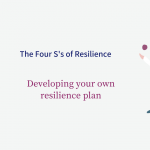Anxiety disorders are among the most prevalent mental health conditions, affecting millions of people worldwide. These disorders can significantly impact an individual’s daily life, relationships, and overall well-being. This article aims to provide a comprehensive understanding of anxiety disorders by exploring their symptoms, common types, and available treatment options. By increasing awareness and knowledge, individuals can seek appropriate help and support, leading to improved quality of life.
I. What are Anxiety Disorders?
- Definition: Anxiety disorders are mental health conditions characterized by excessive and persistent worry, fear, and apprehension. These feelings often go beyond what is considered normal and can interfere with daily functioning.
- Types of Anxiety Disorders: Anxiety disorders include generalized anxiety disorder (GAD), panic disorder, social anxiety disorder (SAD), specific phobias, and obsessive-compulsive disorder (OCD). Each type has distinct symptoms and triggers but shares the common feature of excessive anxiety.
II. Symptoms of Anxiety Disorders:
- General Symptoms: Individuals with anxiety disorders may experience physical, emotional, and cognitive symptoms. Physical symptoms can include rapid heartbeat, shortness of breath, sweating, trembling, and fatigue. Emotional symptoms may involve excessive worry, irritability, restlessness, and a sense of impending doom. Cognitive symptoms often manifest as racing thoughts, difficulty concentrating, and a heightened state of alertness.
- Generalized Anxiety Disorder (GAD): GAD is characterized by excessive worry and anxiety about various aspects of life, such as work, relationships, health, or everyday situations. Individuals with GAD often find it challenging to control their worry, and it can interfere with their ability to function and enjoy life.
- Panic Disorder: Panic disorder is characterized by recurring panic attacks, which are sudden and intense episodes of fear and discomfort. These attacks can be accompanied by physical symptoms such as chest pain, dizziness, and a sensation of losing control. Individuals with panic disorder often develop a fear of future panic attacks, leading to avoidance behaviors.

- Social Anxiety Disorder (SAD): SAD, also known as social phobia, involves an intense fear of social situations and a fear of being judged or humiliated by others. Individuals with SAD may avoid social interactions, leading to significant distress and impairment in personal and professional relationships.
- Specific Phobias: Specific phobias involve an intense and irrational fear of a specific object, situation, or activity. Common examples include fear of heights, flying, spiders, or needles. Avoidance behaviors are common among individuals with specific phobias.
- Obsessive-Compulsive Disorder (OCD): OCD is characterized by recurring intrusive thoughts (obsessions) and repetitive behaviors or mental acts (compulsions). These obsessions and compulsions can significantly interfere with daily life and cause distress.
III. Treatment Options for Anxiety Disorders:
- Therapy: Cognitive-behavioral therapy (CBT) is the most widely used and effective form of therapy for anxiety disorders. CBT helps individuals identify and modify negative thought patterns and behaviors associated with anxiety. Exposure therapy is often used to gradually expose individuals to feared situations or objects, reducing anxiety responses over time.
- Medication: Antidepressant and anti-anxiety medications, such as selective serotonin reuptake inhibitors (SSRIs), are commonly prescribed to manage anxiety disorders. These medications can help regulate brain chemistry and reduce symptoms. However, medication should be prescribed and monitored by a qualified healthcare professional.
- Lifestyle Changes: Adopting a healthy lifestyle can also contribute to managing anxiety disorders. Regular exercise, sufficient sleep, stress management techniques (e.g., mindfulness, relaxation exercises), and a balanced diet can promote overall well-being and reduce anxiety symptoms.

- Support Groups: Joining support groups or seeking support from friends, family, or mental health professionals can provide valuable emotional support and validation. Sharing experiences and learning from others can help individuals feel less alone in their struggle with anxiety disorders.
- Self-Care Practices: Engaging in self-care activities that promote relaxation and stress reduction can be beneficial for managing anxiety. Examples include practicing mindfulness or meditation, engaging in hobbies and interests, spending time in nature, and maintaining a healthy work-life balance.
IV. Seeking Help for Anxiety Disorders:
- Recognizing the Signs: Understanding the symptoms of anxiety disorders is essential in recognizing when help is needed. If persistent anxiety significantly impacts daily life and causes distress, it may be time to seek professional assistance.
- Consulting a Healthcare Professional: A healthcare professional, such as a primary care physician or mental health specialist, can evaluate symptoms, provide a diagnosis, and recommend appropriate treatment options. They may refer individuals to a psychologist, psychiatrist, or therapist for further assessment and therapy.
- Importance of Early Intervention: Early intervention is crucial in managing anxiety disorders effectively. The sooner individuals seek help, the better their chances of reducing symptoms and improving their quality of life.
Anxiety disorders are common mental health conditions that can significantly impact individuals’ lives. Understanding the symptoms and types of anxiety disorders is animportant step in seeking appropriate help and support. With various treatment options available, including therapy, medication, lifestyle changes, support groups, and self-care practices, individuals can effectively manage anxiety disorders and improve their overall well-being. It is crucial to recognize the signs of anxiety disorders and seek help from healthcare professionals to receive proper diagnosis and treatment. By increasing awareness and understanding, we can create a supportive environment that promotes mental health and empowers individuals to overcome anxiety disorders and lead fulfilling lives.




















Add Comment